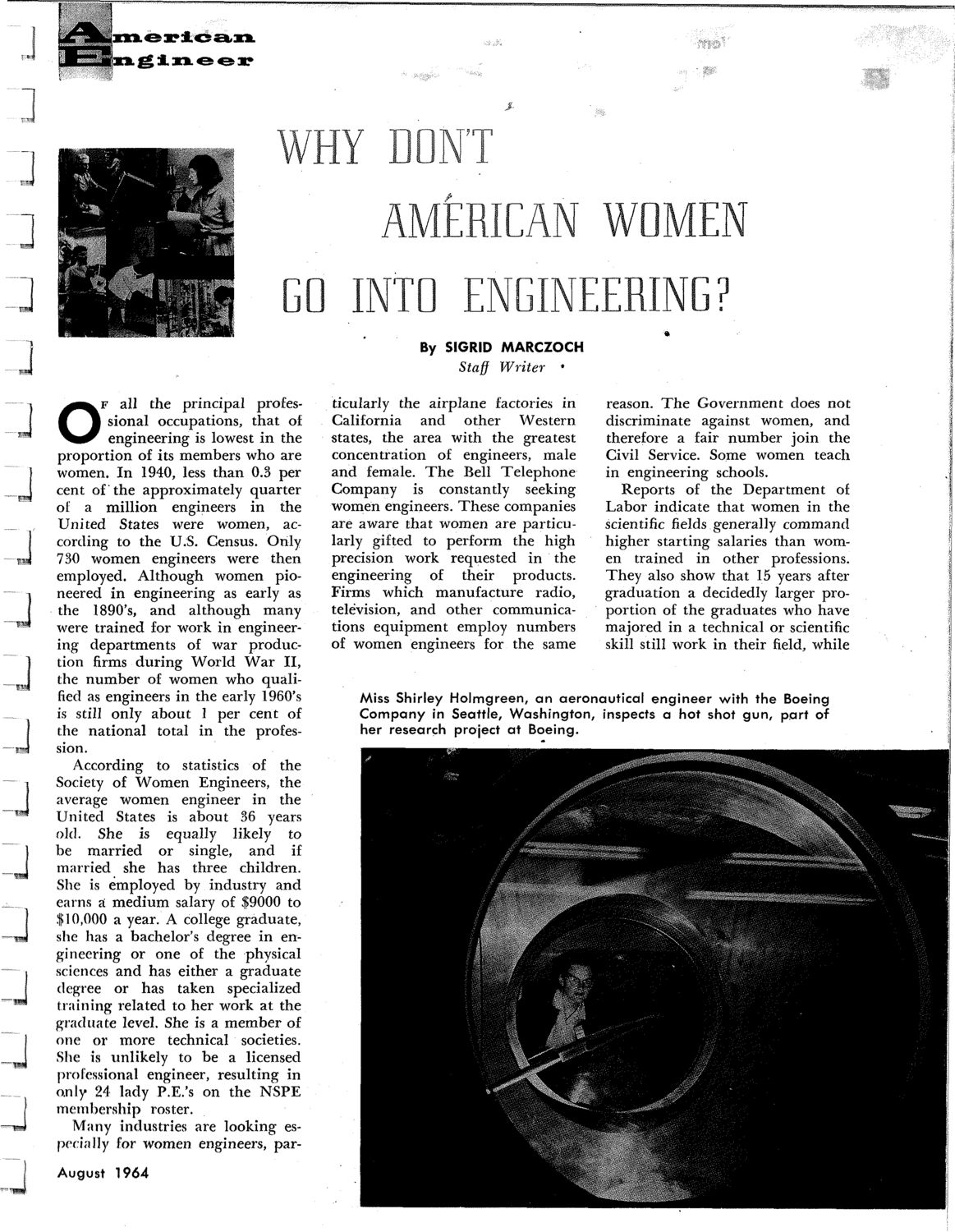| |
| |
Caption: SWE - News Clippings Book
This is a reduced-resolution page image for fast online browsing.

EXTRACTED TEXT FROM PAGE:
m . <JB a? dfccs «a,x». bm. g 1. xm. c* ^ a? AMERICAN WOMEN GO INTO ENGINEERING? By SIGRID MARCZOCH Staff Writer F all the principal professional occupations, that of engineering is lowest in the proportion of its members who are women. In 1940, less than 0.3 per cent of the approximately quarter of a million engineers in the United States were women, according to the U.S. Census. Only 730 women engineers were then employed. Although women pioneered in engineering as early as the 1890's, and although many were trained for work in engineering departments of war production firms during World War II, the number of women who qualified as engineers in the early 1960's is still only about 1 per cent of the national total in the profession. According to statistics of the Society of Women Engineers, the average women engineer in the United States is about 36 years old. She is equally likely to be married or single, and if married she has three children. She is employed by industry and earns a medium salary of $9000 to $10,000 a year. A college graduate, she has a bachelor's degree in engineering or one of the physical sciences and has either a graduate degree or has taken specialized training related to her work at the graduate level. She is a member of one or more technical societies. She is unlikely to be a licensed professional engineer, resulting in only 24 lady P.E.'s on the NSPE membership roster. Many industries are looking es- • reason. T h e Government does not discriminate against women, and therefore a fair number join the Civil Service. Some women teach in engineering schools. Reports of the Department of Labor indicate that women in the scientific fields generally command higher starting salaries than women trained in other professions. They also show that 15 years after graduation a decidedly larger proportion of the graduates who have majored in a technical or scientific skill still work in their field, while O ticularly the airplane factories in California and other Western states, the area with the greatest concentration of engineers, male and female. The Bell Telephone Company is constantly seeking women engineers. These companies are aware that women are particularly gifted to perform the high precision work requested in the engineering of their products. Firms which manufacture radio, television, and other communications equipment employ numbers of women engineers for the same Miss Shirley Holmgreen, an aeronautical engineer with the Boeing Company in Seattle, Washington, inspects a hot shot gun, part of her research project at Boeing. pecially for women engineers, parAugust 1964
| |